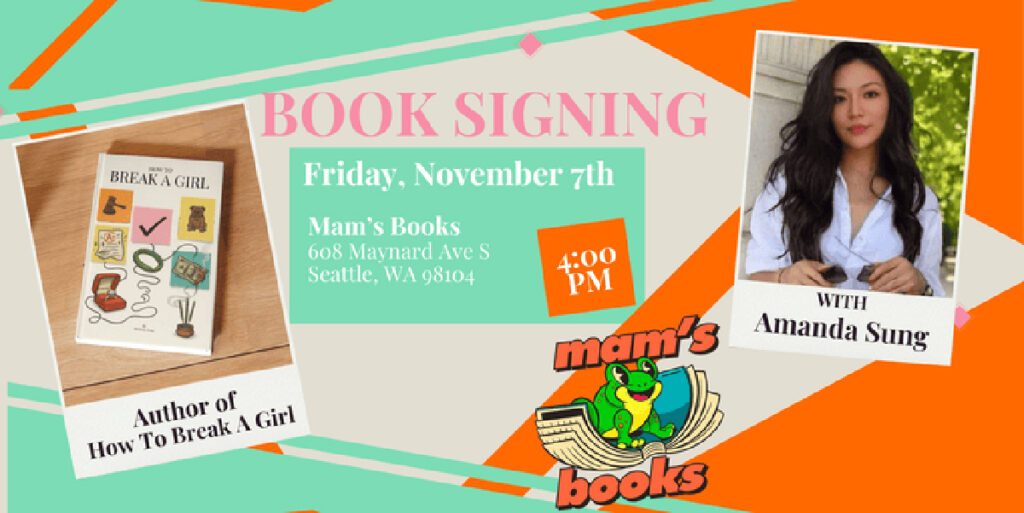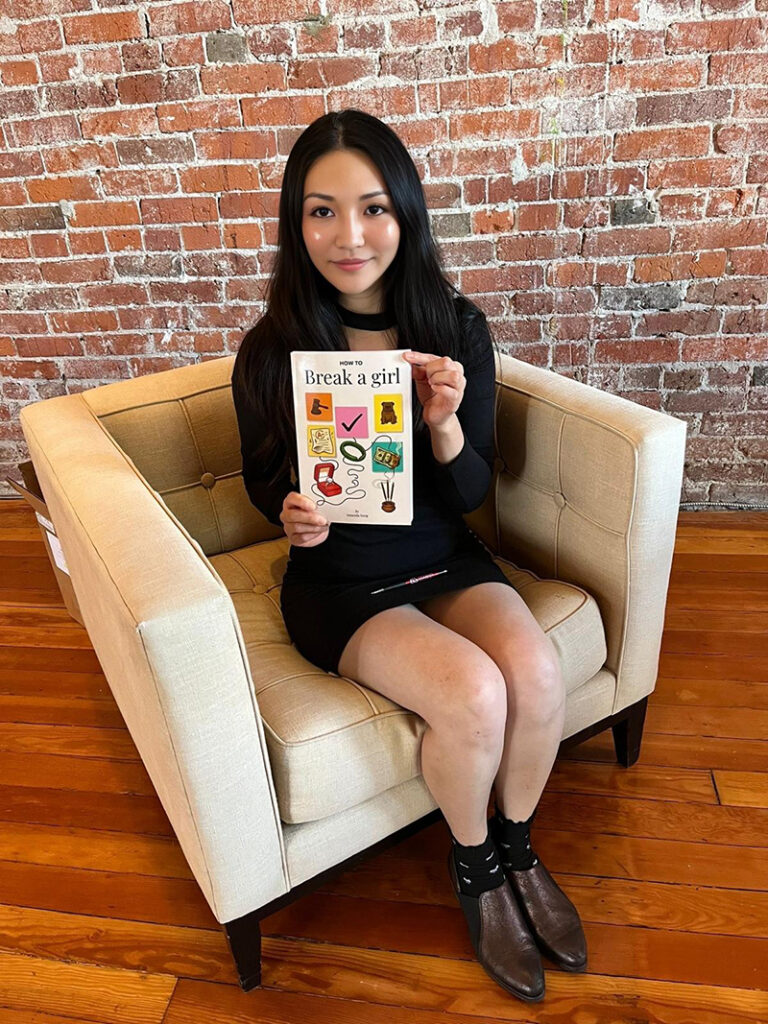By Kai Curry
NORTHWEST ASIAN WEEKLY

Photo Courtesy of Amanda Sung
While in graduate school, Taiwanese Canadian Amanda Sung was given the opportunity to write a memoir as a thesis. Now, Sung has turned that memoir into a debut novel, “How to Break a Girl.” In advance of an author event for Sung at Seattle’s own Mam’s Books on Nov. 4, the Northwest Asian Weekly talked to Sung about the series of life events that led to this first novel.
The event at mam’s, in Seattle’s Chinatown-International District (CID), is partly titled, “Books as Neighborhood Care.” This comes from an idea of Sung’s that gathering together to celebrate a new book is not just a literary event, it’s a community event. As a spokesman at Mam’s explained, these events are a way to “nourish the places that hold them.” When it comes to the Asian American population, be it in the CID, San Francisco’s Chinatown, or anywhere across the U.S., there are many immigration stories that, when told together, uphold shared heritage. It becomes a way to care for each other, and gives places like mam’s a way to keep culture alive.
The same can be said in Canada, and in Vancouver, British Columbia, which is Sung’s stomping ground. Sung hopes, through her writing and through events like these, to create a bridge between Asian populations in Canada and the U.S. They have so many things in common, yet Sung has noticed that the way Asians are treated in the U.S. differs from the way they are treated in Canada. Mainly, due to immigration patterns perhaps, the concept of “diversity” in Canada seems to apply more to Asians than it does in the U.S., Sung observed.
“I long to create a community where [overseas Asians] can connect in a way that they never thought of before.”
The book is one step in this process, yet it’s not the first. Sung has long been interested in the emotional and mental impact on Asian immigrants, in large part due to her own difficult story. After college, Sung took a job with a nonprofit in Canada called Family Services. She went down the communications and PR path, and recently, she reported on her local Chinatown for a Vancouver community network, Novus TV. In addition to kicking off as a writer, Sung is now pursuing a degree in counseling to supplant that first memoir-writing degree in journalism.

Photo Courtesy of Amanda Sung
Sung’s family immigrated to Canada when Sung was a young teenager. Because of the challenge of finding equitable employment in the New World, Sung’s father, a professor, stayed behind in Taiwan, while Sung, her younger sister, and their mother made the move. It wasn’t long, though, before Sung’s father joined them, with a girlfriend. Sung’s mother was pushed out and returned to Taiwan—without even telling the kids, Sung recalled. Her mother never came back to Canada. When things were not the fairy tale that Sung’s father was hoping for in his newly constructed household, he also returned to Taiwan.
“My sister and I basically ended up growing up on our own,” Sung revealed. She was 16.
This is fuel for writing. In fact, the subtitle of Sung’s novel is “Whatever doesn’t break you makes you write a novel about it.” It’s not really about “breaking” a girl, as much as it is about how three girls, friends, all survived what tried to break them. Like Sung. Each character is a part of her, and tells part of her story. Although “How to Break a Girl” is no longer that memoir from college, it is the direct descendent of it. Sung and her sister were what are called “satellite children” of “satellite parents”—parents that parented remotely. While that was a novelesque situation, Sung didn’t feel her story alone was enough to sustain a book. While this may no longer be a memoir, per se, it’s still Sung’s voice, speaking of her trauma, to strengthen herself and others. The iffy parenting, an unsafe childhood, a divorce later in life. For a long time, Sung was silent, she said.
“We have the ability to author our story,” was her conclusion, and her action.
“How to Break a Girl” follows three friends—Elizabeth, Aurora, and Lily—who are all part of the Asian Canadian immigrant demographic, but with different backgrounds. Their lives run the gamut of the bad things that can happen to a person, yet ultimately, it’s a story of resilience.
“It’s about rebuilding and what healing looks like when it happens between women,” says the event invite from mam’s. “How to Break a Girl” has been described by Sung and others as “Sex and the City,” but with Asian Canadians as the main characters. Sung says the character of Elizabeth is the most like her, although the character of Lily is the writer. Elizabeth comes through a harrowing divorce and is described by Sung as “a badass.” “She decides what she’s going to do and she’s not afraid of risk,” Sung said of Elizabeth, making that character the person that Sung wants to be as her future adult self.
Originally, Sung wanted the cover of the book to be a Chinese chess board, as a symbol of how “no matter how hard life can try, they can never break a girl,” she told the Asian Weekly. “How to Break a Girl” touches on several themes, including the theme of the harsh parenting style typical within many Asian immigrant families.
“It becomes impossible for a lot of Asian children to speak up, or to even do anything wrong, to make any mistakes,” Sung commented. This leads to covered up mental health issues, which is part of what Sung hopes to overcome with her writing and her eventual counseling work.
“It’s up to us to break the cycle,” she said.
Information on “How to Break a Girl: Whatever doesn’t break you makes you write a novel about it” at AmandaSung.com, HowtoBreakaGirl.com, Goodreads, and Amazon.com.
The mam’s Bookstore author event for Sung and “How to Break a Girl” is Nov. 7 at 4 p.m. at 608 Maynard Ave. S. in Seattle. To reserve a spot, go to Eventbrite, Luma, or Facebook Event.
Kai can be reached at newstips@nwasianweekly.com.

